The term Goldfinch refers to several different types of birds in two different taxonomic genuses in the finch family. There are four different species, including the European, American, Lawrence’s, and lesser Goldfinch.
One of the most common and better-known species is the American species. For this reason, that will be our focus throughout this article. Read on to learn about the Goldfinch.
Description of the Goldfinch
American Goldfinches are bright yellow birds with black plumage on the tops of their heads, wings, and tails. They also have white barring and markings on their wings and tails. The plumage of females is slightly less vibrant than the males. However, outside of the breeding season, both males and females dull to a light brown color.
Their beaks are short, thick, and triangular. Most of these birds are four or five inches long, and weigh less than an ounce.
Interesting Facts About the Goldfinch
These are brightly-colored birds that certainly draw attention at backyard birdfeeders. Learn more about what makes these birds so interesting below.
- Cold Avoidance – Like many other songbirds, Goldfinches fly south for the winter. However, these birds do not fly to a specific destination. Instead, they base their destination on the temperatures. These birds only fly as far as they need to be in non-negative temperatures.
- Brighten Up – These finches change color based on the season. During the breeding season, their plumage is bright yellow and quite flashy. As the breeding season passes, their plumage changes to a light brown color. Because of this, these little birds molt their feathers twice per year.
- True Herbivores – This species of finch has one of the most strictly vegetarian diets of any bird. While most birds feed on insects during the breeding season, Goldfinches feed their chicks the same seeds that they eat year-round.
- Cow’s-Bane – Like many birds, these suffer from brood parasites, most commonly cowbirds. Brood parasites are birds that lay their eggs in other birds’ nests, and let the other pair do the work raising their young. However, cowbirds meet their match with these would-be adoptive parents. Though the Goldfinches do not notice the brood parasite, cowbird chicks cannot survive on a diet of only seeds.
Habitat of the Goldfinch
This species lives in several different types of habitats, usually in tropical or temperate regions. Some of their favorite ecosystems include grasslands, meadows, forest edges, floodplains, savanna, scrub forest, and more. They prefer areas with a variety of shrubs, flowers, and other seed-producing plants.
These little birds are also quite amenable to human interaction, and often live in urban areas. They thrive in parks, gardens, backyards, pastures, farms, and other manmade areas.
Distribution of the Goldfinch
American Goldfinches live across much of North America. The northernmost populations migrate south during the winter. In other regions they are year-round residents.
Migratory populations spend their spring and summer throughout southern Canada and the Midwest United States. Year-round residents live throughout the northern and central United States. Winter populations live throughout the rest of the southern United States into Mexico.
Diet of the Goldfinch
These finches are strict herbivores, and eat only plants. Specifically, they are granivorous, and eat only seeds and grains. Their diet consists of weeds, seeds, nuts, pinecones, and other similar grains.
One of their favorite places to forage is backyards, where they utilize birdfeeders and eat their fill of seeds. Their foraging behavior occurs both in shrubs and plants, and along the ground. Some of their favorite types of seeds are sunflowers, asters, nyjer, thistle, and more.
Goldfinch and Human Interaction
Humans and Goldfinches interact quite frequently. These little birds love to visit backyards, farms, parks, suburbs, and other urban areas. In turn, people enjoy seeing these beautiful birds at their birdfeeders.
Perhaps due in part to their ability to utilize birdfeeders, their populations are quite stable and actually increasing in number. The IUCN lists this species as Least Concern.
Domestication
Humans have not domesticated Goldfinches in any way.
Does the Goldfinch Make a Good Pet
No, these birds do not make good pets. In fact, in the United States it is illegal to own one as a pet, because the Migratory Bird Treaty Act protects them from capture, harassment, and harm.
Goldfinch Care
In zoos, Goldfinches require similar care to other finches and small songbirds. They are popular fixtures in walk-through aviaries, because of their bright coloration. In aviaries, these birds share their space with many other species of small birds.
Walk-through aviaries are large enough for multiple species of birds to share space and establish their own territories. Their enclosures also contain a variety of trees, shrubs, bushes, and water features. Zookeepers feed them a diet of seeds and berries.
Behavior of the Goldfinch
American Goldfinches are diurnal, or active during the day. They are social birds, which means that they both roost and forage in groups. Flocks are usually relatively small, and spend their time flitting from bush to bush or hopping on the ground in search of seeds.
As the breeding season arrives, males begin signing to attract potential mates. They sing for several months before breeding actually commences.
Reproduction of the Goldfinch
Ones pairs form, they build their nests in bushes or small trees. The female lays an average of five eggs pet clutch. She takes over all incubation duties while the male brings her food, and the eggs hatch after about two weeks.
The male continues to bring food for the chicks, while the female broods the hatchlings. It takes only a week for the chicks to reach independence, but they do not master flight until they are about two weeks old. Hatchlings normally breed in their first year.


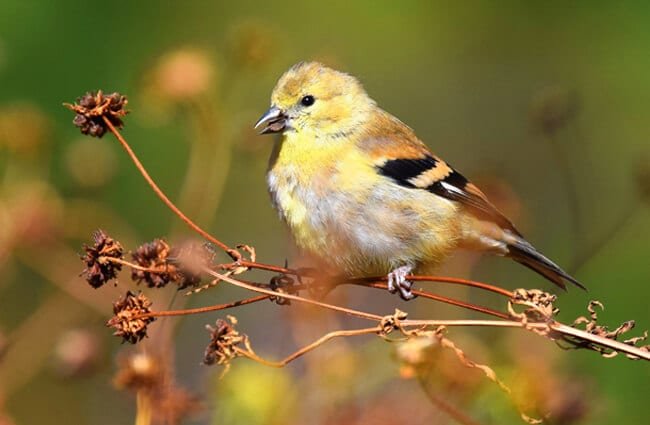
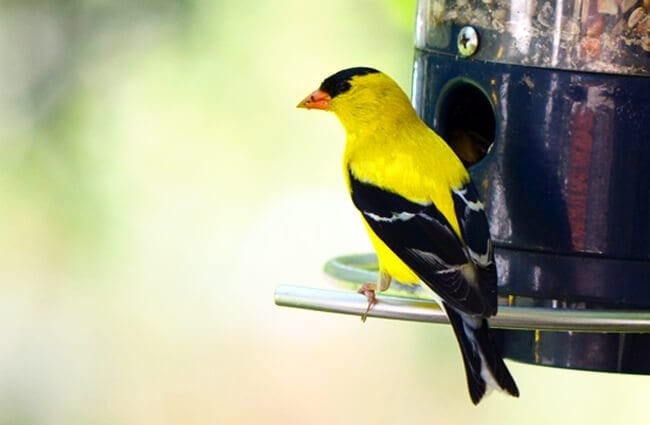
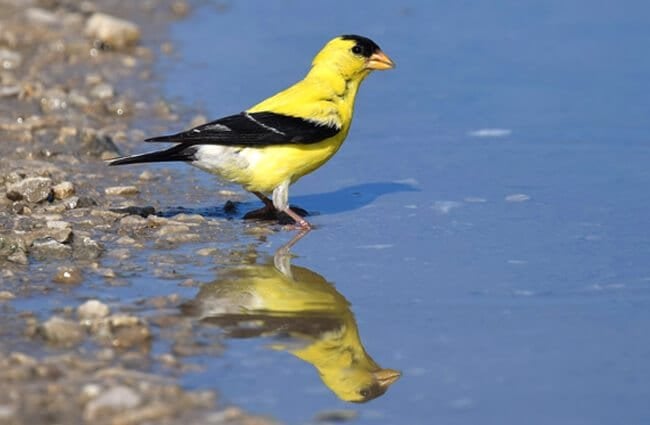
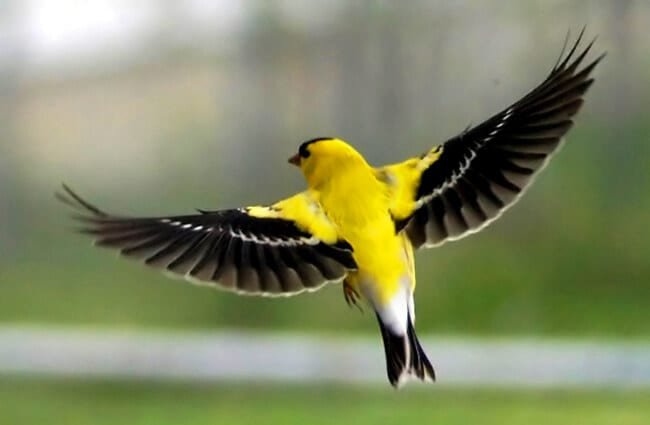
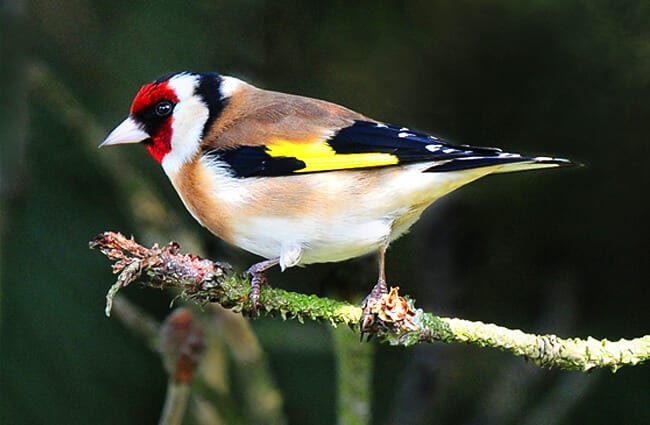

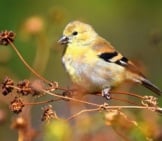
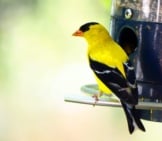



![Red Angus Closeup of a beautiful Red Angus cowPhoto by: U.S. Department of Agriculture [pubic domain]https://creativecommons.org/licenses/by/2.0/](https://animals.net/wp-content/uploads/2020/03/Red-Angus-4-238x178.jpg)












![Red Angus Closeup of a beautiful Red Angus cowPhoto by: U.S. Department of Agriculture [pubic domain]https://creativecommons.org/licenses/by/2.0/](https://animals.net/wp-content/uploads/2020/03/Red-Angus-4-100x75.jpg)

